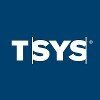Filter interviews by
Morningstar Data Research Analyst Interview Questions and Answers
34 Interview questions
EPS stands for Earnings Per Share, a financial metric that indicates the portion of a company's profit allocated to each outstanding share of common stock.
EPS is calculated by dividing the company's net income by the number of outstanding shares.
It is an important indicator of a company's profitability and is often used by investors to evaluate a company's performance.
Higher EPS indicates higher profitability and ...
Financial statements are interrelated as they provide different perspectives on the financial health of a company.
The income statement shows the company's revenues and expenses, which directly impact the net income on the balance sheet.
The balance sheet provides a snapshot of the company's assets, liabilities, and equity, which are also reflected in the cash flow statement.
The cash flow statement shows how changes...
GAAP and IFRS are two sets of accounting standards used globally, with GAAP being primarily used in the US and IFRS being used in many other countries.
GAAP (Generally Accepted Accounting Principles) is the accounting standard used in the United States, while IFRS (International Financial Reporting Standards) is used in many other countries around the world.
GAAP is more rules-based, with specific guidelines for how...
Revenue is the total amount of money generated by a business through sales, while income is the profit earned after deducting expenses from revenue.
Revenue is the total amount of money generated by a business from its normal business activities.
Income is the profit earned by a business after deducting expenses such as operating costs, taxes, and interest.
Revenue is the top line of the income statement, while incom...
Two important financial ratios are the current ratio and return on equity.
Current ratio measures a company's ability to pay its short-term obligations with its short-term assets. Formula: Current Ratio = Current Assets / Current Liabilities
Return on equity (ROE) measures a company's profitability by showing how much profit a company generates with the money shareholders have invested. Formula: ROE = Net Income / S...
Two common liquidity ratios are current ratio and quick ratio.
Current ratio: Current assets divided by current liabilities. It measures a company's ability to cover its short-term obligations with its short-term assets.
Quick ratio: (Current assets - inventory) divided by current liabilities. It provides a more stringent measure of liquidity as it excludes inventory, which may not be easily convertible to cash in t...
The three financial statements are the income statement, balance sheet, and cash flow statement.
Income statement shows a company's revenues and expenses over a specific period of time.
Balance sheet provides a snapshot of a company's financial position at a specific point in time.
Cash flow statement shows how changes in balance sheet and income statement affect cash and cash equivalents.
Example: Income statement - ...
Venture capital is funding provided by investors to startup companies and small businesses that are deemed to have long-term growth potential.
Venture capital is a type of private equity financing that investors provide to startup companies and small businesses that are believed to have long-term growth potential.
Venture capitalists typically take equity in the company in exchange for their investment.
Venture capit...
Interest tax shield refers to the tax savings a company receives from deducting interest expenses from its taxable income.
Interest tax shield is a financial benefit that results from the tax-deductibility of interest payments on debt.
It reduces the amount of taxable income, leading to lower tax liability for the company.
The formula to calculate interest tax shield is: Interest Tax Shield = Interest Expense x Tax R...
Enterprise value is a measure of a company's total value, including debt and equity.
Enterprise value is calculated as market capitalization plus debt, minority interest, and preferred shares, minus total cash and cash equivalents.
It represents the total value of a company that would need to be paid off if the company were to be acquired.
Enterprise value is often used in financial analysis to compare companies with...
Morningstar Data Research Analyst Interview Experiences
52 interviews found
60 mins and reasoning and english
(2 Questions)
- Q1. What is EPS and explain?
- Ans.
EPS stands for Earnings Per Share, a financial metric that indicates the portion of a company's profit allocated to each outstanding share of common stock.
EPS is calculated by dividing the company's net income by the number of outstanding shares.
It is an important indicator of a company's profitability and is often used by investors to evaluate a company's performance.
Higher EPS indicates higher profitability and poten...
- Q2. What id spin off?
- Ans.
A spin-off is a new company formed through the sale or distribution of new shares of an existing business division or subsidiary.
Spin-offs are created when a parent company decides to separate a portion of its business into a new entity.
Spin-offs can help unlock value for shareholders by allowing the new entity to focus on its specific market or industry.
Examples of spin-offs include PayPal from eBay, Trivago from Expe...
I applied via Job Portal and was interviewed in Feb 2024. There was 1 interview round.
(5 Questions)
- Q1. Mostly behavioural questions oriented in the background experience and soft skills. Overall a great friendly discussion and good experience.
- Q2. Why do we hire you?
- Ans.
I bring a unique blend of analytical skills, technical expertise, and a passion for data-driven decision-making to your team.
Strong Analytical Skills: I have a proven track record of analyzing complex datasets to derive actionable insights, as demonstrated in my previous role where I improved operational efficiency by 20%.
Technical Proficiency: I am proficient in data analysis tools such as SQL, Python, and Excel, whic...
- Q3. Why this position? And why Morningstar?
- Q4. Project assessment processes and KPIs
- Q5. How di you handle conflict at workplace?
- Ans.
I approach workplace conflict with open communication, active listening, and a focus on collaborative solutions.
Open Communication: I initiate conversations with the involved parties to understand their perspectives. For example, when a colleague and I disagreed on a project approach, I scheduled a meeting to discuss our viewpoints openly.
Active Listening: I make sure to listen actively to the concerns of others. Durin...
Basic Aptitude Questions
(3 Questions)
- Q1. Core Finance Questions
- Q2. Different presentation of balance sheet
- Ans.
Balance sheet can be presented in vertical or horizontal format, with assets on one side and liabilities and equity on the other.
Balance sheet can be presented in a vertical format, where assets are listed on the left side and liabilities and equity on the right side.
Alternatively, it can be presented in a horizontal format, with assets at the top and liabilities and equity below.
Common sections on a balance sheet incl...
- Q3. Ratio Analysis for companies
- Ans.
Ratio analysis is a method of evaluating a company's financial performance by comparing different financial metrics.
Ratio analysis helps in assessing a company's liquidity, profitability, efficiency, and solvency.
Common ratios include current ratio, quick ratio, return on equity, and debt-to-equity ratio.
It is important to compare ratios with industry benchmarks or historical data for better interpretation.
Ratio analys...
(4 Questions)
- Q1. How are the three financial statements connected
- Ans.
The three financial statements (income statement, balance sheet, and cash flow statement) are connected through the flow of information about a company's financial performance and position.
The income statement shows the company's revenues and expenses over a period of time, which affects the company's net income.
The net income from the income statement flows into the balance sheet as retained earnings, affecting the co...
- Q2. What is enterprise value
- Ans.
Enterprise value is a measure of a company's total value, including debt and equity.
Enterprise value is calculated as market capitalization plus debt, minority interest, and preferred shares, minus total cash and cash equivalents.
It represents the total value of a company that would need to be paid off if the company were to be acquired.
Enterprise value is often used in financial analysis to compare companies with diff...
- Q3. What is interest tax shield
- Ans.
Interest tax shield refers to the tax savings a company receives from deducting interest expenses from its taxable income.
Interest tax shield is a financial benefit that results from the tax-deductibility of interest payments on debt.
It reduces the amount of taxable income, leading to lower tax liability for the company.
The formula to calculate interest tax shield is: Interest Tax Shield = Interest Expense x Tax Rate.
E...
- Q4. Basic journal entries quiz
Interview Preparation Tips
I applied via Naukri.com and was interviewed in Feb 2024. There were 3 interview rounds.
Question related to accounting, English and reasoning
(1 Question)
- Q1. Questions related to finance
(1 Question)
- Q1. Basic questions asked by HR
I applied via Approached by Company and was interviewed in Aug 2023. There were 4 interview rounds.

There was questions related to aptitude and also include finance related questions.
(1 Question)
- Q1. In this round HR ask questions regarding your previous company or related to your graduation
(1 Question)
- Q1. In this round manager has taken the interview and he has asked the questions related to finance
I applied via Naukri.com and was interviewed in Sep 2023. There were 3 interview rounds.

Easy level and some questions related to finance
(5 Questions)
- Q1. How will you work in a team?
- Ans.
Collaboration in a team involves communication, shared goals, and leveraging diverse skills to achieve common objectives effectively.
Open Communication: I prioritize clear and open communication, ensuring everyone is on the same page. For example, I regularly update my team on project progress.
Active Listening: I make it a point to listen to my teammates' ideas and feedback, which fosters a collaborative environment. I...
- Q2. How you going to manage your work if you have disagreement with someone in you team?
- Ans.
Disagreements in a team can be managed through open communication, collaboration, and a focus on shared goals.
Open Communication: I would initiate a conversation to understand the other person's perspective, ensuring that both sides are heard.
Collaborative Problem-Solving: I would suggest a brainstorming session to explore potential solutions together, fostering a team-oriented approach.
Focus on Data: I would rely on d...
- Q3. Tell me about yourself?
- Ans.
I am a data research analyst with a strong background in data analysis, statistical modeling, and data visualization techniques.
Educational Background: I hold a degree in Statistics, where I developed a solid foundation in data analysis and interpretation.
Technical Skills: Proficient in tools like Python and R for data analysis, and experienced with SQL for database management.
Project Experience: Worked on a project an...
- Q4. Why do you want to join this organisation?
- Ans.
I am drawn to this organization for its commitment to innovation, data-driven decision-making, and opportunities for professional growth.
Innovative Projects: The organization is known for its cutting-edge projects, such as developing predictive analytics tools that enhance decision-making.
Data-Driven Culture: I admire how the organization prioritizes data in its strategies, ensuring that insights lead to actionable out...
- Q5. When did the last time you faced rejection?
- Ans.
Rejection is a part of growth; I faced it recently when my project proposal was not accepted, teaching me resilience and adaptability.
Project Proposal Rejection: I submitted a proposal for a data analysis project, but it was rejected due to budget constraints.
Learning Experience: This rejection prompted me to seek feedback, which helped me refine my proposal and understand stakeholder priorities.
Resilience: I learned t...
I applied via Referral and was interviewed before Aug 2023. There were 3 interview rounds.
Questions related to quantitative aptitude and financial ratios.
(4 Questions)
- Q1. How are all the financial statements related to each other?
- Ans.
Financial statements are interrelated as they provide different perspectives on the financial health of a company.
The income statement shows the company's revenues and expenses, which directly impact the net income on the balance sheet.
The balance sheet provides a snapshot of the company's assets, liabilities, and equity, which are also reflected in the cash flow statement.
The cash flow statement shows how changes in t...
- Q2. Explain any 2 financial ratios and their relevance.
- Ans.
Two important financial ratios are the current ratio and return on equity.
Current ratio measures a company's ability to pay its short-term obligations with its short-term assets. Formula: Current Ratio = Current Assets / Current Liabilities
Return on equity (ROE) measures a company's profitability by showing how much profit a company generates with the money shareholders have invested. Formula: ROE = Net Income / Shareh...
- Q3. Difference between GAAP and IFRS
- Ans.
GAAP and IFRS are two sets of accounting standards used globally, with GAAP being primarily used in the US and IFRS being used in many other countries.
GAAP (Generally Accepted Accounting Principles) is the accounting standard used in the United States, while IFRS (International Financial Reporting Standards) is used in many other countries around the world.
GAAP is more rules-based, with specific guidelines for how to a...
- Q4. Difference between revenue and income
- Ans.
Revenue is the total amount of money generated by a business through sales, while income is the profit earned after deducting expenses from revenue.
Revenue is the total amount of money generated by a business from its normal business activities.
Income is the profit earned by a business after deducting expenses such as operating costs, taxes, and interest.
Revenue is the top line of the income statement, while income is ...
(2 Questions)
- Q1. Are you comfortable with working in shifts?
- Ans.
Yes, I am comfortable with working in shifts.
I have previous experience working in shifts at my previous job.
I am flexible with my schedule and can easily adapt to different shift timings.
I understand the importance of round-the-clock data analysis and am willing to work in shifts to ensure timely results.
- Q2. How do you handle monotonous work?
- Ans.
I break down the work into smaller tasks, take short breaks, and stay organized.
Break down the work into smaller tasks to prevent feeling overwhelmed
Take short breaks to refresh and refocus
Stay organized with to-do lists or schedules to track progress
Find ways to make the work more engaging, such as setting goals or challenges
Seek opportunities to learn or improve skills during the monotonous tasks
I applied via LinkedIn and was interviewed in Aug 2022. There were 4 interview rounds.

Basic Finance questions, Quants and Logical questions
(2 Questions)
- Q1. Tools you used and you will be using at morningstar depending on that technical round happens. Excel, SQL, Python
- Q2. Tell me about yourself, Previous projects or experience you have, etc, etc
- Ans.
I am a Data Research Analyst with experience in various projects.
Worked on a project analyzing customer behavior and preferences to improve marketing strategies.
Developed a predictive model to forecast sales based on historical data.
Collaborated with a team to analyze survey data and identify trends and patterns.
Conducted data cleaning and preprocessing to ensure data accuracy and reliability.
Utilized statistical techn...
(1 Question)
- Q1. Managerial round basic questions for checking confidence
Interview Preparation Tips
I applied via Company Website and was interviewed in Aug 2022. There were 4 interview rounds.

First round was Aptitude test and it consist of 60 questions. 30 questions of equity and finance and 30 questions of LR,Quant,English.
(1 Question)
- Q1. Second round was a technical round in which they ask about working capital(gross and net),LIFO, FIFO, EPS, Diluted eps,etc
(1 Question)
- Q1. Third round was a managerial round in which a manager asked about the behavioural related questions like What are the challenges you will be facing in this job,why do you think you are a good fit for the r...
Interview Preparation Tips
Be prepare for the interview round.
Keep mobile phone with zoom application and earphones handy and check microphone and speakers of laptop before the interview.
I faced such problem.
Top trending discussions






Morningstar Interview FAQs
The duration of Morningstar Data Research Analyst interview process can vary, but typically it takes about 2-4 weeks to complete.
Tell us how to improve this page.
Morningstar Interviews By Designations
- Morningstar Data Research Analyst Interview Questions
- Morningstar Research Associate Interview Questions
- Morningstar Data Analyst Interview Questions
- Morningstar Associate Interview Questions
- Morningstar Research Analyst Interview Questions
- Morningstar Software Engineer Interview Questions
- Morningstar Data Research Analyst 1 Interview Questions
- Morningstar Senior Research Analyst Interview Questions
- Show more
Interview Questions for Popular Designations
Overall Interview Experience Rating
based on 27 interview experiences
Difficulty level
Duration
Interview Questions from Similar Companies
Morningstar Data Research Analyst Reviews and Ratings
based on 233 reviews
Rating in categories
|
Data Research Analyst
1.6k
salaries
| ₹3.7 L/yr - ₹8.3 L/yr |
|
Research Associate
662
salaries
| ₹3.3 L/yr - ₹7.2 L/yr |
|
Senior Data Research Analyst
629
salaries
| ₹4.6 L/yr - ₹8.6 L/yr |
|
Software Engineer
369
salaries
| ₹9.9 L/yr - ₹16 L/yr |
|
Senior Research Associate
349
salaries
| ₹4 L/yr - ₹9.1 L/yr |

Axis Direct

Kotak Securities

FactSet

Sharekhan
- Home >
- Interviews >
- Morningstar Interview Questions















